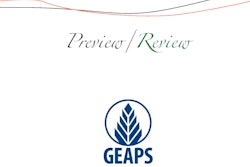In the last week we observed a firm increase in national corn and soybeans basis in the cash market. On average across the nation we watched spot corn basis rise 2 cents, while beans added nearly 3 cents.
The river accounted for large basis increases this week with corn increasing on average 10 ½ cents and soybeans adding another 8 ¾ cents. The gulf bid moved sharply higher this week driven by demand for corn and soybeans delivered before any restrictions can be placed on barges. The continued dryness in the Midwest is still impacting the Mississippi river and if rain is not received within the next few weeks, there is a good chance we may see restrictions placed on the tow size and drafts of barges between St. Louis and Cairo, IL. Some anticipate restrictions as soon as December 10th.
Ethanol plants improved their basis for corn by 1 ¾ however, the river continues is rapidly approach in terms of basis competitiveness. When comparing the four year average basis for both river terminals and ethanol facilities, we observe that river terminals average basis crosses over average ethanol basis around November 9th. Due to the lackluster export demand this year and in spite of the early harvest we are observing average river basis becoming more competitive than ethanol a week later than normal. I would expect this to have an impact on the EIA ethanol production numbers in the weeks to come.
Basis also improved strongly throughout domestic soybean plants with average gains by 6 ¾ cents. Despite the bearish November USDA Supply and Demand report, which boosted soybean production and ending stocks higher than the market expected, we still see strong demand for soybeans both domestically and abroad. This week NOPA crush numbers were reported at 153.5 million bushels which beat even the highest analyst expectations and export sales bookings continue to run well ahead of the pace needed to meet the USDA’s expectations. With the decline in soybean prices, I expect crushing plants to continue reacting quickly and competitively to any basis increases along the river.














